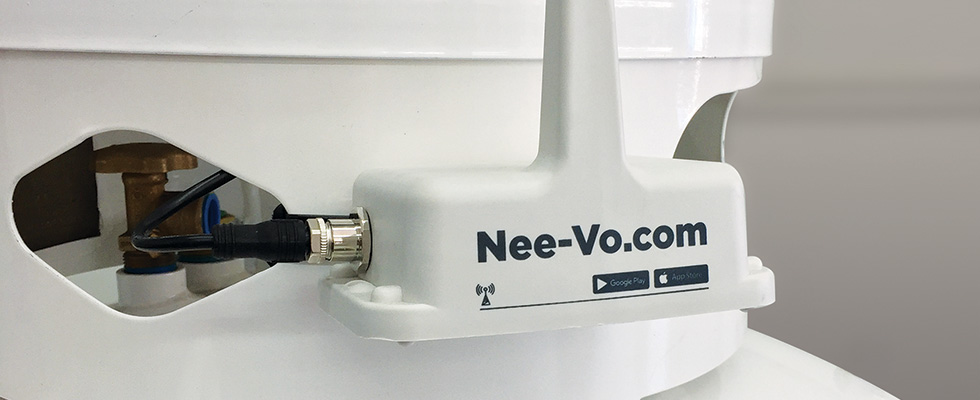
When deploying tank monitors, propane marketers have traditionally made their decisions for each tank based on the expected return on investment and the need to avoid runouts for customers with unpredictable usage. Today, more considerations have been added to this decision-making process. Otodata, a supplier of tank monitors, management software and a mobile app, has found that marketers are now also considering customer expectations, digital marketing and the labor shortage of drivers.
“One thing we’re noticing is that the need for monitors is being driven by a combination of things,” said André Boulay, president of Otodata. He shared some things propane marketers should consider when taking stock and reevaluating how widely they should deploy tank monitors.
Include the Labor Shortage in ROI Calculations
The mathematics and return on investment (ROI) of tank monitors is now better understood than ever, Boulay reported. One new factor being included in ROI calculations is the ongoing labor shortage of drivers.
Tank monitors reduce the need for drivers by enabling the marketer to make larger, less frequent deliveries of propane. “In the areas where the labor shortage is worst and they just can’t hire additional drivers, marketers are upping the percentage of tanks they monitor,” Boulay said.
Make It Easy With Digital Tools
Customers expect to be able to check their fuel level at any time. They don’t want to walk outside to check the level; they want to open an app. Customers also expect to be able to communicate digitally with the marketer. More and more marketers are realizing this must be part of their offering.
There has been a trend toward customers expecting information and communications to be available on demand. That means it should be at their fingertips on a phone, tablet or desktop computer.
The trend significantly accelerated during the pandemic as customers sheltered at home and made greater use of digital services.
Because of their customers’ changing expectations, marketers are recalibrating their criteria for deploying monitors. Some are adding tank monitors even when the ROI is not there. Boulay said this is new in just the past year or so.
“Now they are considering intangibles such as how the monitor and the app will help their customer retention,” he said. “We provide the app so the customer can click a button to check the fuel level, order fuel, etc. This is a way to jump into digital marketing very affordably.”
 Install Monitors From Spring Through Fall
Install Monitors From Spring Through Fall
Marketers often ask Otodata representatives about the best ways to install monitors. Boulay shared the following suggestions. First, it’s best to have drivers do the installations, rather than technicians.
“The driver is there already,” Boulay said. He added the marketers generally prefer to have the installations done by their own staff, rather than having a third-party installer visit their customers and perform the work on their behalf.
Second, it’s best to install tank monitors during all the months outside of the peak heating season. Too many propane marketers try to squeeze all the installations into the fall, because they have peak season during the winter and then their employees take vacations during the summer. “We suggest starting in the spring, doing installations all summer and then into the fall,” Boulay said.
Keep Pricing Simple for the Customer
Fewer marketers are charging their customers for tank monitoring, Boulay reported. That’s because tank monitors are less expensive than they used to be and because marketers have a better understanding of the value of tank monitoring, in terms of both the company’s ROI and marketing.
Sometimes, though, it’s tough not to charge a fee, he added. In the case of a low-usage consumer, such as one who uses propane only for a cooktop and gets a refill only every 18 months, it’s tough to attain the ROI.
Boulay suggests including the tank monitor fee in the tank rental fee, if there is one, or companies can add a few pennies per gallon. He finds that programs are not successful when there are several charges such as a tank monitor installation charge, a monthly tank monitoring fee and a monthly tank fee.
When the fees are broken out like that, he explained, customers often say those things should be the marketer’s responsibility. “We suggest offering a choice of either a smart tank or not or hiding the fee in the cost of a gallon,” Boulay said.
Consider Hardware as a Service
Otodata recently added a hardware-as-a-service (HaaS) program. With this service, there is no upfront cost. Instead, the monitor, online portal and branded mobile app are bundled into a monthly payment that starts at $3 a month.
“Fundamentally, it becomes a finance question,” Boulay said. “Our clients look at this as a way to deploy more monitors with the same budget. It makes the product more accessible because they don’t have to buy the monitors.”
In addition, for customers who choose the HaaS program, Otodata extends the warranty for the full term. Customers should have access to many flexible options at the end of the term.
Expect Deployments to Trend Upward
Most marketers have some experience with tank monitors. Boulay said that was not the case even just two or three years ago. With that experience, marketers are asking vendors different sorts of questions.
Rather than asking how tank monitors work, they ask about battery life, warranty length, software features and service level. Propane marketers typically have tank monitors installed on between 5% and 10% of their tanks. Some are more aggressive and have monitors on 50% of their tanks. Overall, it’s trending upward.
“We see a move to more monitors,” Boulay said. “We see more marketers talking about larger deployments.”
He said that as monitoring continues to get more affordable, he believes 80% of tanks will be monitored. In addition, new products will become available to cost-efficiently monitor tanks that use less propane. Such tanks account for 30% of the customers in the U.S.
“With accurate knowledge of the level of a tank, an endless level of service can be delivered to the customer,” Boulay said. “In five to 10 years, I think it will be rare to not have a monitor on a tank.”


